Raine’s Guide: Color Names in Lolita Fashion
I started this guide ages ago and then never finished and posted it, so I figured I would get it finished. Disclaimer: I’m not fluent in Japanese, and a lot of this is based on how brands use these colors, not on what the actual words mean in Japanese. It’s also worth noting that different brands use different color names differently, especially when it comes to shades of white, which are used in different ways by different brands and often aren’t uniform.
This guide is roughly sorted by color. If you have a weird translation, and are trying to match it to a color, try using CRTL+F to locate the weird translation or the original Japanese.
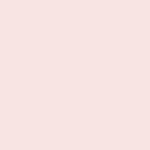
Pink (ピンク)
One of the most common colors in lolita. Typically a pastel, baby pink. Classic brands tend to use more dusty shades of pink, while sweet brands trend towards colors suitable for a little girl’s nursery.
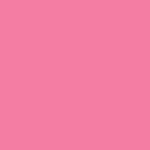

Dark Pink (濃ピンク)
When used by sweet brands, this is almost always a bright bubblegum pink, and it’s most often used by sweet brands. If someone is talking about dark pink angelic pretty, it’s the first bright pink color. When used by classic brands, it’s sometimes used to describe mauve, plum or deep dusty rose colors. Like Kinari, for most brands, this is a loosely defined color.

Bordeaux (ボルドー ) / Wine (ワイン)
A deep purple-toned red. Bordeaux is a type of wine, so this is literally just a fancy way of saying “wine red” or dark red. However, sometimes brands will use both Wine and Bordeaux as separate colors for the same item. In those cases, Bordeaux is more purple and wine is more red.
Crimson (エンジ) / Enji / Engine
Also a bright red color. It seems to just vary from brand to brand if they use this or Aka (アカ). If they use both, Enji / Engine is darker red than Aka (アカ), and lighter / less blue than Bordeaux (ボルドー ) / Wine (ワイン)

Red (アカ) (赤) / Aka
Typically a bright cherry red color. Less common you might see レッド (literally just red in English)
Purple (パープル) / Grape
If it’s too dark to be lavender and too blue to be Bordeaux, it’s purple. Usually a ‘plum’ sort of color. Meta sometimes uses the word ‘Grape’
Lavender (ラベンダー)
Lavender in lolita ranges from shades that are practically pink, to shades that are a more true light purple.
Sax (サックス) / Sax Blue (サックスブルー)
Sax is short for “Saxon Blue”. However, lolita doesn’t actually use sax for that color. Sax in lolita is usually a very pastel light blue. Saxon blue was more of a green-toned royal blue. Saxon Blue has a somewhat romantic history in that is was a great secret how it was made, and then someone found a way to replicate it, sent their sample to Louis XV of France, hoping that ridding costumes in this très chic color could be made for the king. Since actual saxon blue was very much in vouge in the late 1700s, and it has such an interesting history, it’s not a big stretch to imagine someone started using it in the very early days of lolita as a “cute” name for blue (or possibly even borrowed it from another source that had started using it). Either way, it was used very early on; Angelic pretty was already using it in 2002, and I’ve seen it used in Cutie magazine in the 90s. (Read More: Why is light blue called Sax?)

Ao Blue (アオ) / Ao
In lolita, this color is most often just called “Ao Blue”. The closest approximation in English might be “lavender blue”, or Blue violet, but even then, it’s not 100% perfect. This color is associated with Angelic Pretty, who uses it infrequently, but more often than most other brands from what I’ve seen. It can be lighter than the example shown above, and sometimes is more blue as well.
“Bue jay” (the bird) can be written as アオカケス in Japanese, and blue mold can be written as アオカビ. So, it seems like this is meant to be a “cute” color name.
Blue (ブルー)
Typically, royal blue, however anything that edges too dark to be sax, but not dark enough to be Navy will fall into this category.

Moitie Blue
A colloquial term for the sometimes electric royal blue shade that is a hallmark of Moi-Meme-Moitie.
Navy (コン) (紺) / Con / Kon
Navy blue. コン / Kon is used far more frequently in lolita than 紺 (Navy blue) but it doesn’t translate well in google translate. Usually any shade of dark blue is called navy, even if it doesn’t have the green undertones that are often associated with navy blue in the west. Some navy blue (especially with AatP, or sometimes IW, can be nearly black).
Peacock Blue ( ピーコックブルー)
A shade of teal that is used primarily by classic brands like MM.
Mint (ミント)
Mint is a light green with a creamy sort of undertone. Think Mint flavored icecream.
Green (グリーン) / Gurin
Green, typically a bright grass green or apple green, not a light mint green.
Khaki (カーキ ) / Olive
Japanese brands call Olive green カーキ which translates to khaki. While khaki is often tan in English, expect an item listed as khaki by a Japanese brand to be olive green.
Yellow (イエロー) / Kiiro (キイロ)
Yellow in lolita is most often a pastel shade just barely to this side of cream, unless we are talking a brand like ETC. Occasionally classic brands will use a mustard-ish goldenrod. Warmer light yellow shades tend to be labeled as beige instead. Very recently, more true pastel yellow shades have been trending.
Cream (クリーム)
Cream is often like… light yellow. If it’s not yellow, it’s usually described as SeiSei (生成) or Kinari (生成り)
Ivory (アィボリー)
Usually white with a drop of yellow. Like if you hold a buttercup up to a white paper and the yellow reflects on it. But it can also be the same as SeiSei (生成) / Kinari (生成り).
White (シロ) (白 ) / Shiro
When white in lolita is described as shiro in Japanese, it’s typically a bleached, bright white, with an almost blue undertone. If a brand typically uses “off-white” and then they release something and call it “white”, it’s going to be like new sneakers bright.
Off (オフ) / Off-White (オフシロ) (オフ白) / Off-Shiro
Off white is often translated to just “white” for the western market (innocent world does this). It’s usually a slightly soft shade of white that is appropriate for lolita. So, brands that sell most things as “off” might list something as “shiro” (white) from time to time, but if they do, that white item will be like electric-day-glo white. If a brand lists almost everything as Shiro (white) and almost nothing as off (off white), then their white is usually a normal soft white, and their off-white is actually probably more of a cream or 生成 (generation) color (confused yet?).
生成 SeiSei / Generation / Generate / Generated / Natural
This is actually the most common Japanese word for greige; which is unbleached and undyed raw fabric. It’s the same as Kinari (生成り), most likely used as a shorthand version. I’m listing it separately here though because as a color, especially in lolita, it’s not the same as greige. Generation is a much lighter color. It’s usually a yellow-toned shade of white. Innocent world translates this to Beige.
生成り Kinari / Creation / Generation / Generate / Generated / Natural
This is actually the word for greige; which is unbleached and undyed raw fabric. It’s sometimes shortened to 生成 (seisei). I’m listing it separately here though because as a color, especially in lolita, it’s not the same as greige. Generation is a much lighter color. It’s usually a yellow-toned shade of white. Innocent world translates this to Beige.
Greige
Greige is more of a concept that a color. It’s a textile industry term for raw fabric that has not been bleached nor dyed. It’s the natural color of the material. Usually, this is a light beige color with a pinky-grey cast to it. Juliette et Justine uses this term, but few other brands do. However, the concept of “raw” fabric as a color is very common; it’s just normally under the name “生成” or “生成り”
Beige (べージュ)
Beige can be the same as SeiSei (生成) / Kinari (生成り), or it can be like a pink-tone color or tan. It’s kind of a toss up.
Milk Tea / Milk / Tea
A nice creamy tan color. Some usakumya are this color, and Innocent world uses it a lot. Think of a cup of tea with a lot of milk, or something that has been tea-stain dyed. Can vary between a soft shade of tan-brown and a lighter shade of cream.
Chocolate (ショコラ) / Brown
Pretty straight forward. A nice shade of brown
Grey (グレ)
Generally a lighter shade of gray, sometimes with warm undertones
Black (クロ) / Kuro
Less commonly, you might see ブラック (literally just black written in English)
Bonus Terms
薄 Usu / Thin / Thinning / Light
This is a modifier that means “light” or “pale”. It often is translated as “thin” by google translate (like how you might eat “light” yogurt if you were on a diet)
Dark (濃)
This is a modifier that means “dark”.
系 Kei
This is a suffix used sometimes which means type or style. If something says something like 赤系 (Aka-Kei); Red-Style, it’s usually sort of like “red version” or “red variation”. It might mean that the piece is multi-colored and they are talking about the base color of the fabric, or the color that specifically is different in this version.
Are there any colors you run into frequently that I’ve left out? Have different opinions about the many shades of white? Let me know in the comments below.



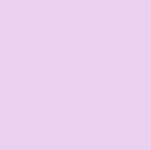







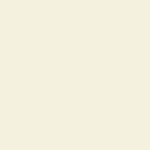

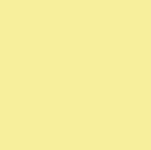
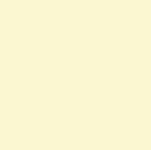






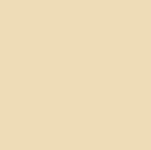



Pink beige…exactly what it sounds like, slightly beige peach. One of my faves.
Thank you for this list!
Any tips for warm greys vs cool grays? I have this aatp skirt in what I’d call a french grey that’s been a pain to match with anything but black. I’d also be curious about Chinese color names and what to look for on taobao.